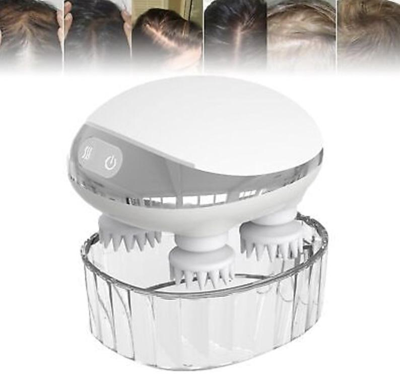It might seem like the stuff of science fiction, but robots are changing the face of modern medicine.
Since the dawn of medicine, human hands have been the only way to perform surgeries, aid patients in recovery, and oversee different administrative tasks in healthcare settings. But now, thanks to technological breakthroughs, robots are used more frequently in the medical industry to streamline certain processes and improve patient outcomes.
Some key advantages of robotics in medicine
Maximum precision is needed when surgeries are performed, and other medical treatments are administered so that patients receive the safest, most effective care. As careful and knowledgeable as the best medical service providers are, they might still make mistakes or have difficulties performing complex procedures.
Some robots used in medical facilities consist of intricate parts that can move in different ways and perform other functions that humans are not always capable of doing to deliver more precise treatments. The sturdy movements and finely tuned mechanisms of the robotic components can also minimize errors caused by medical instrument mishandling or by doctors with shaky hands or vision problems.
Patients can also be monitored better with the use of robotics. Some robots can monitor vital signs more accurately and keep track of changes that may indicate the worsening of a medical condition.
Some robots can save time and energy by doing repetitive or tedious tasks, like cleaning, sorting, or packaging. These robots have been especially useful in pharmacies and hospitals, where they perform clerical and sanitation duties. By managing tedious tasks with robotic assisted surgery, medical staff can focus more on patient care.
Fatigue is prevalent among healthcare workers, and robots have been incorporated into medical settings to reduce the problem. Robots can handle some of the work that often causes fatigue on the job. This can further prevent errors that sometimes occur in healthcare settings when tired staff miss important details or make other mistakes in their work.
Designs and functions of medical robots
Not all robots used in healthcare facilities are the same, and different medical robots have been developed to serve different purposes.
While some robots are entirely automated, others are operated by trained medical professionals who sit at control panels and operate the machinery with computers. Medical professionals sometimes even use joysticks that resemble those commonly used for playing video games to guide robotic components during surgery or while administering other treatments.
Some robots look like large computer screens with additional advanced components needed for functioning. Other medical robots have elements that look and function like human body parts but with more advanced capabilities. Robotic braces and exoskeletons are also used to help patients perform certain functions.
Some medical robots are meant to be stationary and remain in place during use. In contrast, others can move between different areas of a medical facility to manage specific responsibilities, such as cleaning or delivering supplies. Some mobile robots can even use elevators in medical facilities by themselves to go to different floors.
Robots in surgery
Many surgical procedures involve incisions that must be made precisely to achieve successful outcomes and avoid complications. Some surgeries also involve inserting implants or devices into areas that cannot always be accessed easily. Special robots have been developed to make these surgeries easier, and trained surgeons know how to guide these robots so that they perform accurately.
Some surgeons use robotic arms during specific procedures. These robotic arms work similarly to human arms but with more precise movements. Medical robotic arms are designed to have greater dexterity so that areas of the body that are often difficult to reach with human hands can be accessed better. These robotic arms also feature hand-like parts at their ends that can correctly hold and use surgical instruments.
Laparoscopic surgeries, which are generally less invasive and involve fewer incisions than open surgeries, are often aided by robotics nowadays. The mechanical components used can better access areas of the body that are often difficult to reach through small incisions. The robots can also operate with surgical instruments in these problematic areas more proficiently because of their increased range of motion.
Robotic technology has changed the game in heart surgery for the better. Mitral valve surgery can be done with more minimally invasive techniques with robot assistance. Abnormal heartbeats caused by atrial fibrillation may be corrected more effectively when robots partake in a surgical procedure. Robots have even been helpful in treating congenital heart conditions that must be corrected with surgery.
The integration of robotics is also playing a significant role in cancer surgeries and has become the preferred method of performing surgery among many cancer surgeons. Robots that surgeons control are often successful at removing lung, colon, and pancreatic tumors as well as surrounding tissues and lymph nodes where cancer cells may be present. Robots can also assist with removing organs, such as the prostate or kidneys, where cancer has spread. Less pain and bleeding and faster recovery times are often possible when robots are used to remove cancerous tumors and organs.
When joint replacement is necessary, robotic technology can remove damaged or diseased bone and cartilage and carefully integrate the artificial joint without causing harm to the adjacent bone and tissue. This technology can also generate 3D magnified images and provide real-time computer navigation to help surgeons plan procedures and operate in the correct areas. For sensory feedback, the technology can record nerve signals when a joint is being replaced.
Tissue samples that need to be collected for biopsies can be removed surgically with the help of robots. Robotic technology can be especially useful when performing biopsies in certain sensitive areas, such as the brain, that require precise incisions to minimize invasiveness and the chances of complications.
Robots can also help guide needles for needle biopsies.
Better patient monitoring
Doctors cannot be with patients 24/7, and patient monitoring robotic technology can act as an extra set of eyes and ears to keep track of a person’s health. This monitoring form can be especially beneficial for chronic disease sufferers and people who have trouble moving or communicating.
Even when a doctor is not present in an exam or surgery room, robotic technology can monitor a patient’s vital signs and symptoms and alert the doctor if any worrisome signs are detected. Changes in disease progression and overall health can also be monitored better with robotics.
Assist in body movements
People who have experienced a stroke, a spinal cord injury, or another medical condition that has limited their ability to use their arms and legs can often be aided by robots. Patients recovering from procedures, such as orthopedic surgery, can also benefit from robotic aids as they recover and regain mobility.
Robotic braces and exoskeletons are helping patients move their arms and legs again and have even helped some people regain their ability to walk. These robots can assist with functions like standing, walking, and reaching for objects with their arms and hands.
Doctors and physical therapists have found robots particularly beneficial when prescribing exercise programs to patients. In addition to assisting patients with body movements, robotic technology can evaluate a patient’s progress so that the information can be used to determine how they are doing with their treatment over the long term.
This technology can monitor a patient’s form when they are doing certain exercises that a doctor or physical therapist has prescribed. Robotic observation can also ensure that exercise is performed correctly so that the patient does not injure themselves. Some robotic devices are so finely tuned that they can detect even the slightest changes in movements and forces so that medical professionals can know whether to modify the exercise program or if the patient’s condition is worsening despite the exercise.
Patients who participate in robot-assisted exercise programs may further benefit from the virtual reality systems incorporated into some technology. This technology can simulate different settings to make patients feel as though they are exercising in a more exciting or inspiring location, and this can help patients stick with their programs with greater enthusiasm.
Limitations in pathogen exposure
Even though medical centers are often thought of as clean and safe environments, germs and viruses can still circulate throughout these facilities and make patients sick. To try to limit the spread of pathogens as much as possible, robots have been developed to help healthcare providers maintain cleaner settings.
Some robots can disinfect surfaces around healthcare facilities with ultraviolet-C (UVC) light that destroys pathogens by targeting their DNA or RNA. These specially designed robots can travel around to exam rooms and other areas of medical facilities on their own and disinfect surfaces without having to rely on guidance from humans. Using robots to disinfect, medical staff can devote more time to patient care. Cleaning robots have proven to be especially valuable since the COVID-19 outbreak.
The pandemic was also instrumental in the rise of telehealth, which is now widely practiced, not only to remove the pressure on overstretched medical facilities but also to reduce the spread of infectious diseases by limiting contact. Illness in healthcare staff causes significant loss of productivity in the sector every year, and any means of limiting the chances of contracting illnesses is greatly welcomed by medical staff and the patients they serve.
Robotic deliveries
Using robots to transport supplies also helps to limit the spread of pathogens that often result from human-to-human contact, but robotic deliveries can be advantageous in other ways.
Crucial medications can be delivered quickly to emergency rooms and other places around medical facilities by robots. Testing samples can also be delivered to labs to save doctors and patients time and energy. When robots are programmed to provide patient meals, healthcare workers will not have to do the task themselves and can save time. Robots are also valuable for delivering linens and other medical supplies.
Medication administration
Robots have been proven to be highly beneficial in pharmacies. Robots can count out bulk medications and package them individually at a faster rate so that each patient receives the correct medicine and dosages. Robots are even used to cap medication bottles and label each prescription container correctly.
There are even robots that are designed for home health care to assist patients with taking their medications. This can be especially helpful for elderly people and individuals with memory or other cognitive difficulties. Small, tabletop machines can dispense medication so people can take the exact dosages they need daily. Caregivers can also receive notifications from these devices that tell them that the medications and dosages were administered correctly.
Pursuing a career in robotics health care
Robotics is looking set to become the future of healthcare, and it is therefore important for anyone considering a career in medicine to ensure that their education provider is on board with this growing trend and equips their students with the experience and knowledge necessary to become part of this future too. Given the expense often associated with medical robotics, combined with the expertise needed to teach these skills to the next generation, many courses lack adequate facilities to provide a comprehensive education in robotics.
All is not lost, however. Students can find quality training courses out there, and discover the benefits of MSN in nursing, such as those provided by Elmhurst University. Such courses, in addition to providing traditional nursing training, replete with academic study and medical placements, also provide the means to understand and utilize new technologies used in the medical profession. As such, it is also often desirable for veteran medical practitioners to take such courses to continue their professional development and deepen their practice.
Moving toward the future
As advanced as many of today’s robotic technologies are, there are still new discoveries being made in this field that will continue to benefit health care. In the coming years, patients can likely look forward to better treatments with more promising outcomes as medical and technology professionals continue to work together to build a brighter tomorrow.



